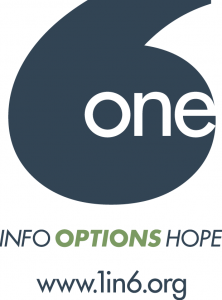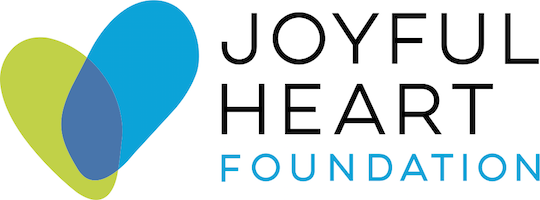You can leave this site quickly.
Learn more about Internet safety.
1in6 Thursday: What About Prevention?
Intervention or Prevention—it’s complicated.
Hang around a prevention specialist long enough and you’ll hear a story. There’s one about the frustration of repeatedly rescuing drowning people who keep floating down the river from upstream. Or maybe they’ll tell you the one about extracting the injured people from the wrecked cars at the bottom of the steep embankment below a curving road. “Sooner or later,” your prevention specialist friend will tell you, “folks realize that it makes more sense to find and fix the broken bridge up the river or to install a guardrail on the winding road than to just keep saving and healing the victims.”
Identify risk. Create awareness. Implement protective strategies (like new bridges or guardrails.) That’s prevention in a nutshell. It’s hard to argue with the wisdom of prevention.
Over the last six years, 1in6 has become a respected leader in the effort to support men who had unwanted or abusive sexual experiences in childhood to live healthier, happier lives. That’s our mission. It doesn’t really sound like prevention. Are we missing the boat?
1in6 doesn’t present ourselves as a “prevention” organization. But there’s actually more going on than initially meets the eye.
Though our focus is unambiguously on helping men (and those who care about them) understand and heal from past troubling sexual experiences, we’re acutely aware of the potential benefit of our work to preventing future harm as well.
Since most of us are raised in cultures where males are often shamed or ridiculed for revealing vulnerability or for expressing feelings of sadness or fear or hurt, it can require great courage for a boy or man to acknowledge having been abused sexually. Most don’t. And as a result, many people are simply unaware, or possibly even defended against believing how widespread sexual abuse of boys actually is. So, spreading awareness that one of every six adult men in the U.S. (19 million men) has experienced sexual abuse in childhood can play a critical role in highlighting risk and encouraging preventive actions before a child is harmed.
Simply stated, you’re not likely to recognize risks or to take steps to prevent harmful behavior if you don’t know or don’t believe there’s a real risk that those behaviors will occur.
The Centers for Disease Control and Prevention (there’s that word again) (CDC) and others have defined three kinds of preventive actions, which they often refer to as primary, secondary and tertiary prevention. They all depend on raising awareness about specific risks and addressing those risks.
Childhood vaccinations are an example of Primary Prevention. Ideally, everyone gets them—not just kids who are immune-deficient or who come from families where there’s been chicken pox or measles before. All kids are vaccinated regardless of risk. Everyone’s protected.
The same is true with primary prevention of sexual abuse. Ideally everyone is given the same knowledge about the prevalence of abuse, about good interpersonal boundaries and healthy sexuality, about recognizing sexualized behaviors that could harm any child. When adults and children are vaccinated with that knowledge, all children are better protected. And when those risky behaviors appear, everyone has access to information about how to get outside help before a child is harmed.
This is where 1in6’s role gets confusing.
Because even though our stated mission is about “intervention,” after the fact—we address all those “primary prevention” issues in depth as we guide people who’ve experienced abuse toward healing and recovery, and as we work to make everyone more aware of the prevalence and impact of abuse.
The same holds true for secondary and tertiary prevention—efforts directed at people who are at higher risk than others, those with particular characteristics or experiences, different from the norm, which make them more vulnerable. Not surprisingly, research shows us that both boys and men who have once experienced sexual, physical or emotional abuse are at a higher risk for subsequent victimization, especially if they haven’t received help to cope effectively with the resulting feelings. (The same is true for women and girls).
Men are particularly vulnerable here because of the social prohibitions against describing their emotional distress, expressing feelings other than anger, or asking for help. So men’s substitute, coping strategies can often lead to emotionally numbing compulsive behaviors, or addictions to things like drugs, alcohol, work, food, sex, dangerous activities, and exercise; or to other more extreme negative behaviors, like physical, emotional or sexual violenceagainst themselves or others.
Once again, a huge part of 1in6’s approach to healing involves encouraging men to explore those prohibited feelings, to understand and to begin to develop, different, safer, healthier means of coping with them. This sort of intervention can have a crucial impact on a man’s ability to avoid his own re-victimization as well as changing his behaviors that are harmful to others. And our focus in our professional trainings on a trauma-informed understanding of men’s ineffective coping strategies highlights the clear role service providers can have by recognizing the links between addressing men’s past traumatic experiences and diminishing the risk for future harmful actions.
1in6’s mission is still about healing and recovery. It’s unlikely that we’ll ever bill ourselves primarily as a “prevention” organization. But everything we do is geared toward supporting men who have had unwanted or abusive sexual experiences in childhood to become healthier, happier, more respectful and productive members of our families and communities. A crucial piece of that effort is educating the world about the prevalence of abuse of boys, its impact and how to help. And when all is said and done, it’s hard to imagine a better prescription than that for prevention.
 - By Peter Pollard
- By Peter Pollard
Peter Pollard is the Training and Outreach Director for 1in6, Inc. Peter previously worked for 15 years as a state, child-protection social worker and was the Public Education director at Stop It Now! Since 2003, he has served as the Western Massachusetts coordinator for SNAP (Survivors Network of those Abused by Priests) and also does work for a Certified Batterers Intervention Program.
The mission of 1in6 is to help men who have had unwanted or abusive sexual experiences in childhood live healthier, happier lives.
1in6′s mission also includes serving family members, friends, and partners by providing information and support resources on the web and in the community.
Joyful Heart and 1in6 invite you to visit 1in6.org for info, options and hope, and to learn more about our partnership and Engaging Men initiative at men.joyfulheartfoundation.org.
The views expressed above are not necessarily those of the Joyful Heart Foundation or 1in6.




Your Voices